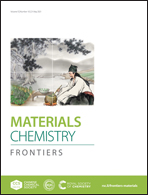“Cooking” hierarchically porous carbons with phenolic molecules and zinc salts†
Abstract
Hierarchically porous carbons (HPCs) with multimodal pore systems have the structural advantages of exposing active sites and promoting mass transport for applications in heterogeneous catalysis, energy storage, and conversion. Here, we develop a general synthetic strategy to HPCs by the carbonization of metal complexing compounds that are prepared by mixing phenolic molecules and Zn salts in alkaline aqueous solution at room temperature. We demonstrate that this approach is applicable to diverse phenolic ligands as long as their structures contain one monotopic chelating group, which is associated with the coordination bonds of Zn2+ and the monotopic chelating site (deprotonated vicinal di-hydroxyl) to form complexes featuring sufficient thermal stability to produce carbons. Remarkably, phenolic molecule/Zn precursors derived HPCs possess extremely high specific surface areas up to 2753 m2 g−1 and large pore volumes up to 3.36 cm3 g−1, which is ascribed to the templating effect of in situ generated ZnO nanoparticles and the thermal activation effect induced by the carbothermal reduction of ZnO to vaporizable Zn. The resulting HPCs show overwhelming advantages in terms of the adsorption rate and capacity toward large pollutant molecules in comparison to microporous carbon due to their hierarchically porous structures.



 Please wait while we load your content...
Please wait while we load your content...